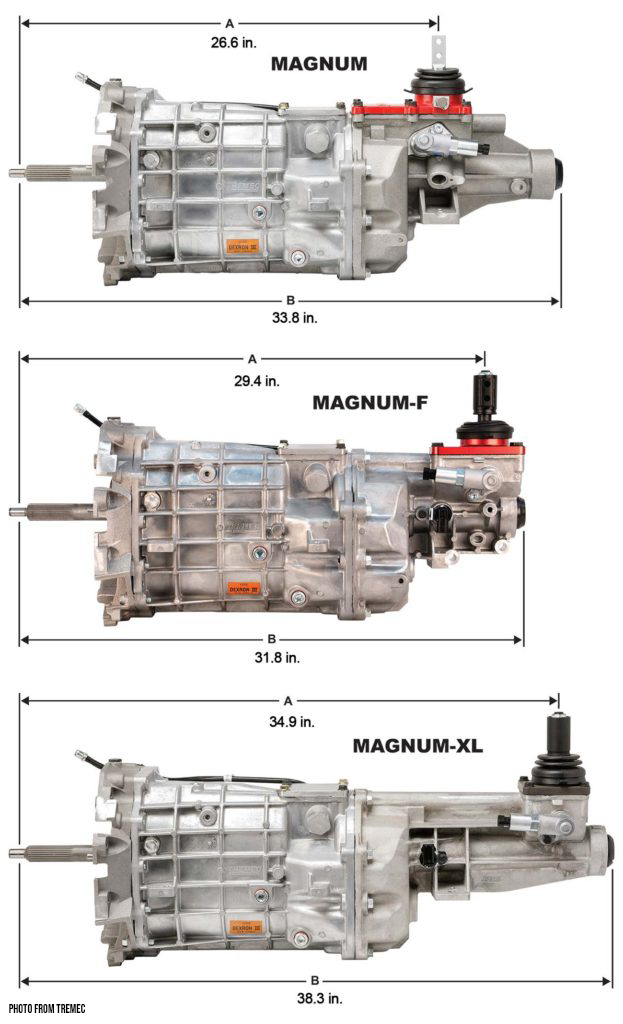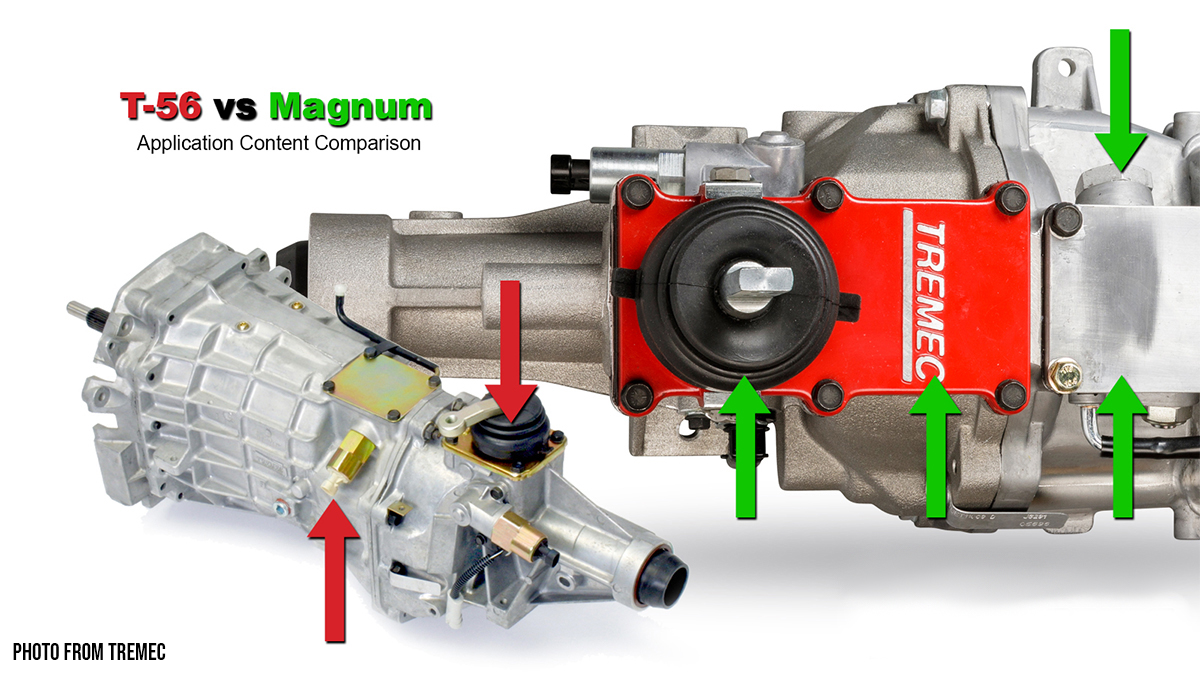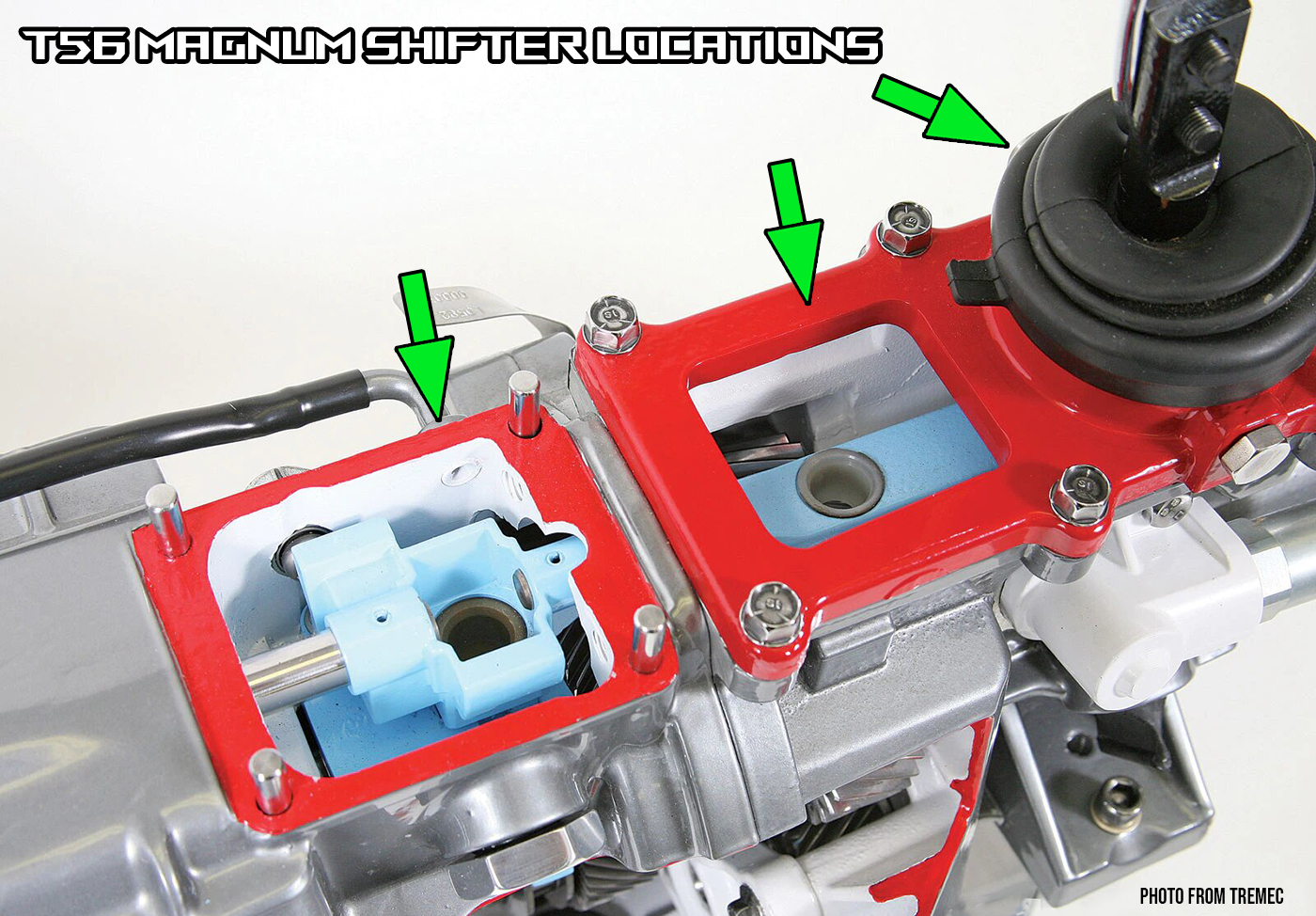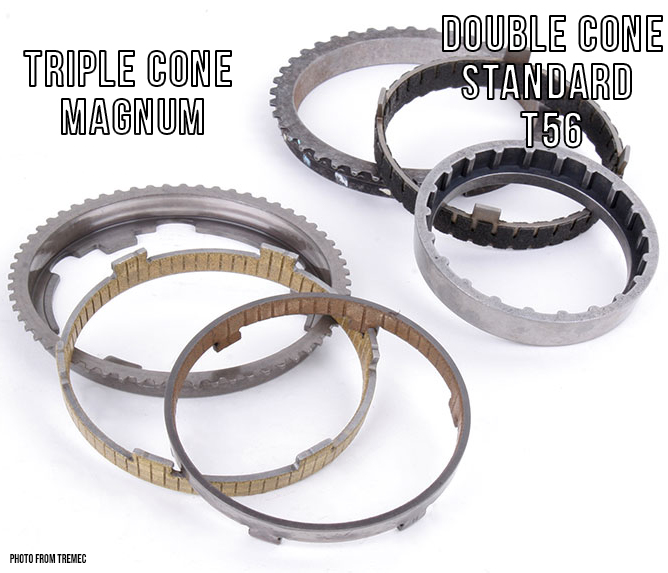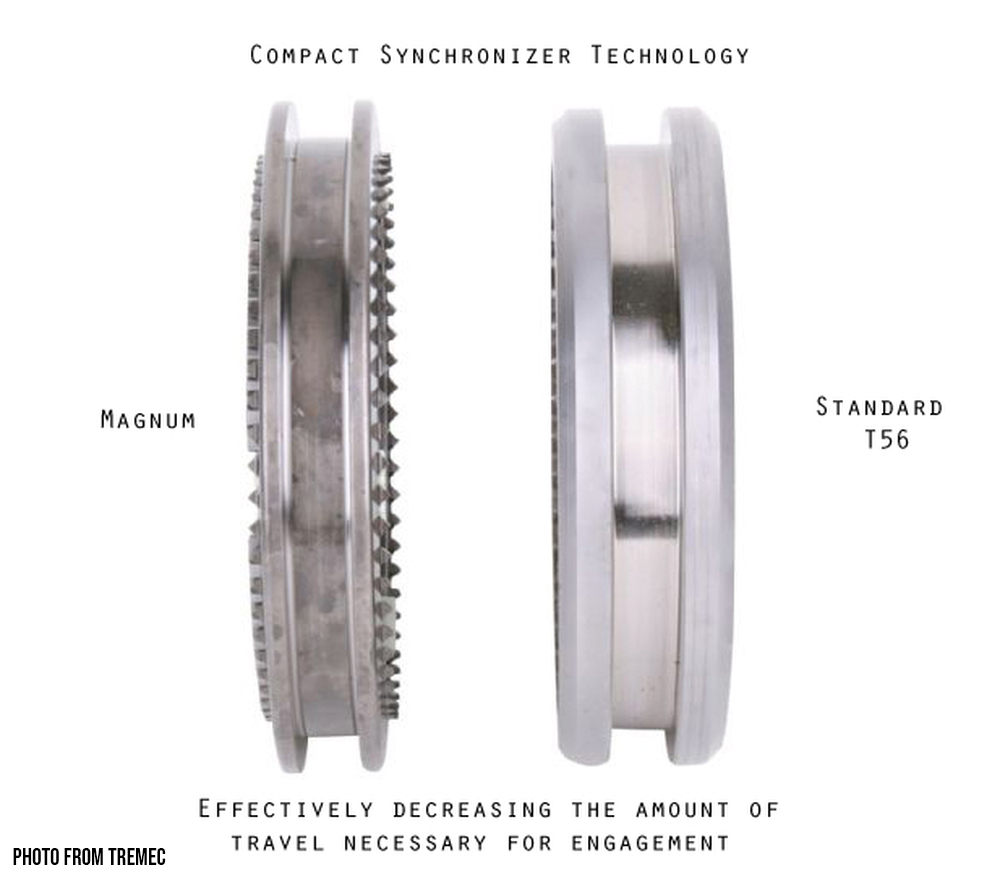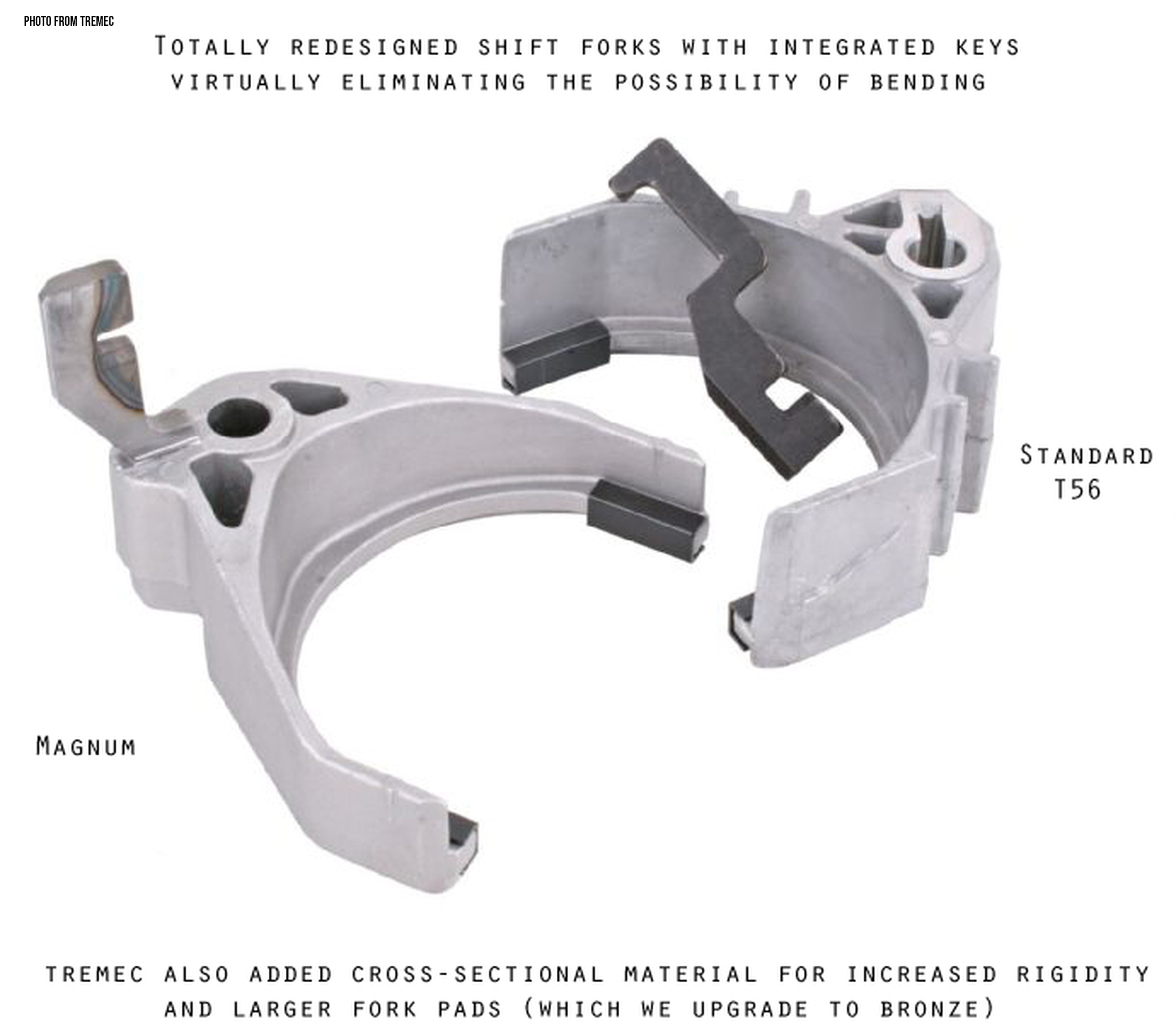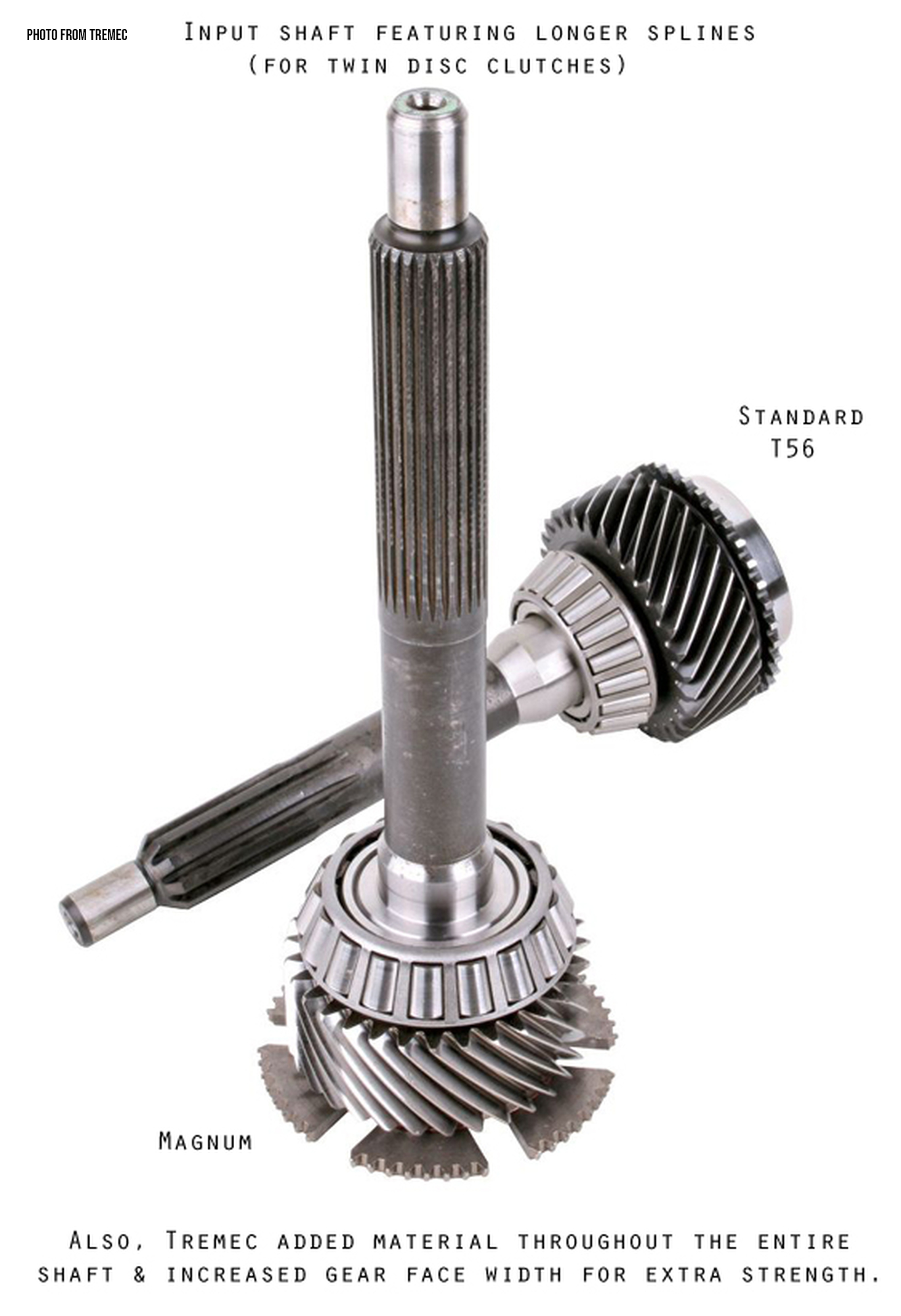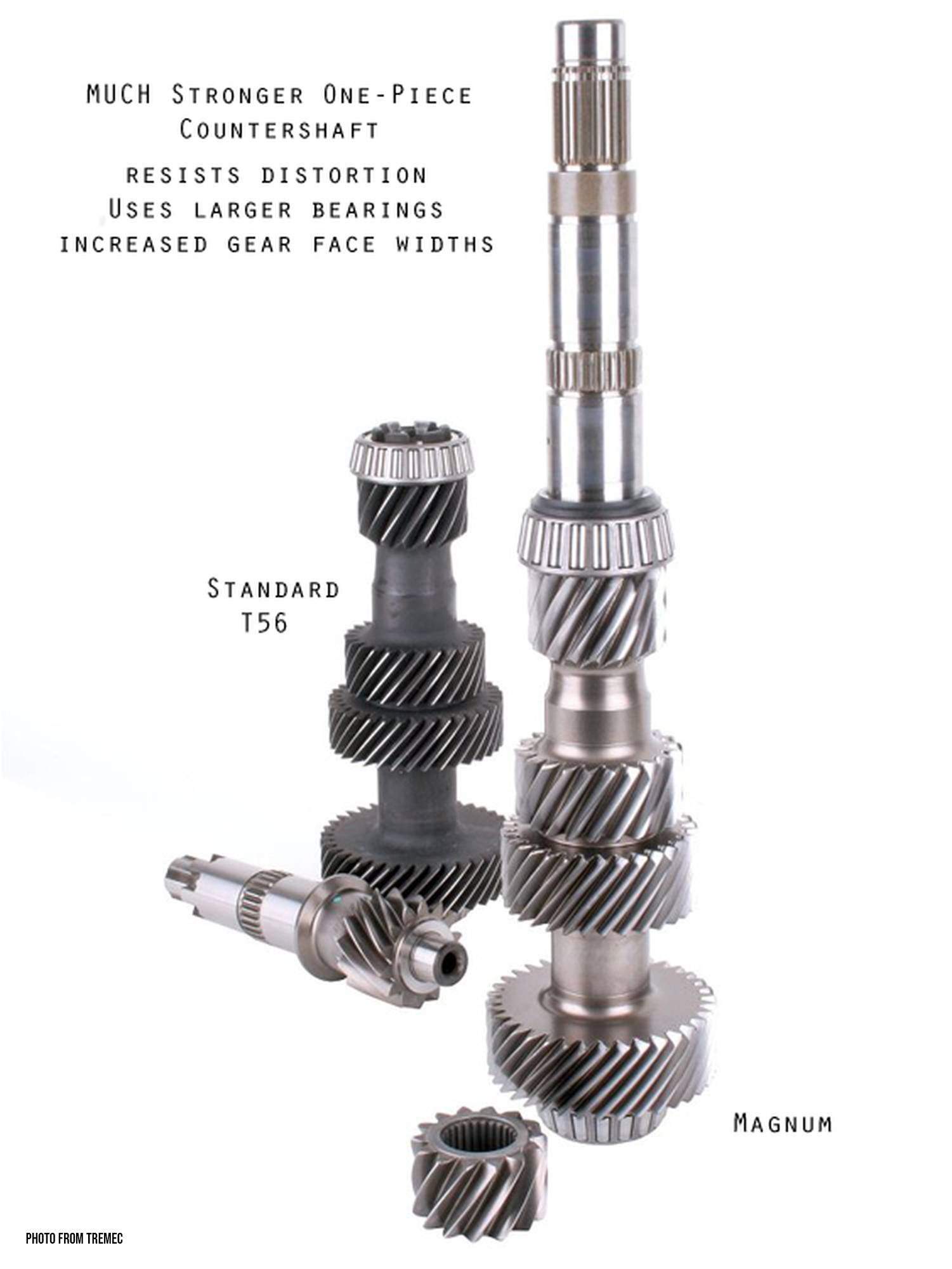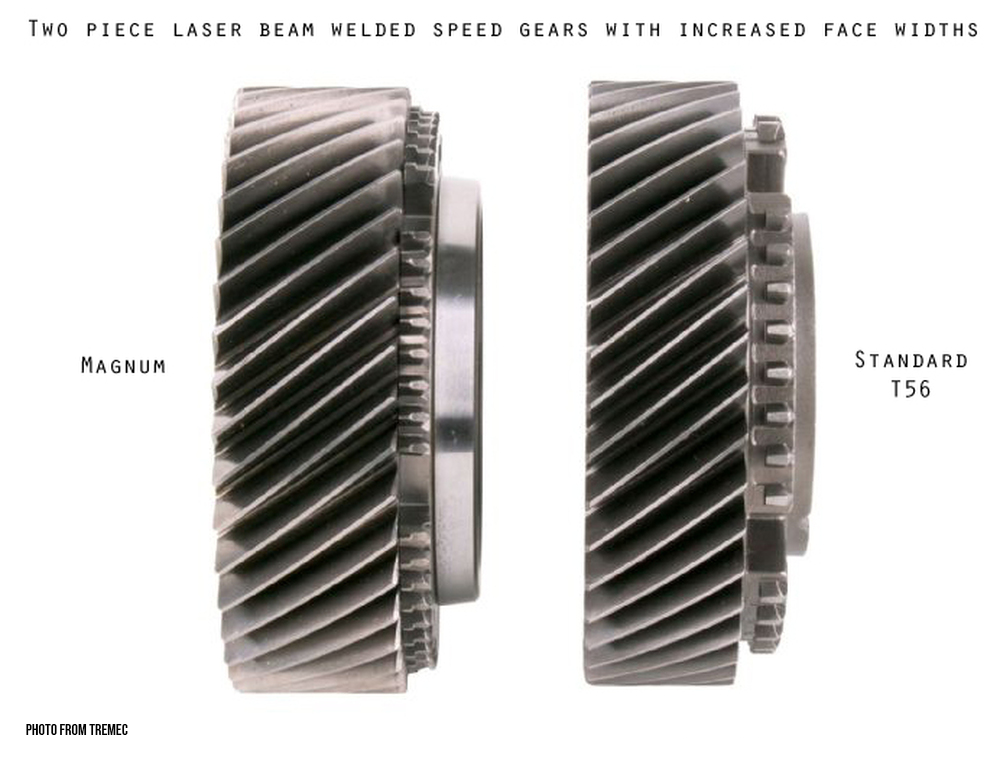The Difference Between T56 and T56 Magnum
17th Sep 2021
T56 vs T56 Magnum
The T56 is one of the most used 6 speed transmissions for an LS swap or cheap replacement for an LS equipped car for its wide availability. Just go to your local junkyard and you'll probably find one. However would it just be easier to get the T56 Magnum if you plan to throw some serious power at it anyways? Every build is different so continue reading to see if the differences make sense for your build and worth the extra coin for a new T56 magnum.
| Variety: Magnum vs Magnum-F vs Magnum-XL
|
Shifter Location: Here you can see the T56 Magnum’s three available shift locations, versus two on the T56, which varies according to application. The Magnum is even more modular because it is capable of reversing these three mounting locations. This means that it can allow for an additional 3 inches forward or rearward. This is extremely valuable for swap applications, this is important when deciding between the two during an unconventional swap. |
The Magnums are more narrow but with an increased diameter in a standard triple-cone design. While the majority of T56s came with a double cone arrangement. All Magnums feature triple-cone arrangement for 1st and 2nd, and generally double cone arrangements for the rest of the transmission gears, including reverse. The T56, offered a mix of double and triple cones (depending on the application) for first and second, and in many cases, a single cone for all other gears. |
Synchronizer: The T56 has a hoop style retainer to hold three stamped steel ‘keys’ in place, attempting to put equal pressure at three points of a circle. Though it worked, the designed was prone to uncontrolled movement which in some severe cases could allow the keys to dislodge. The Magnum synchronizer design difference in comparison to the T56 is summarized in two key points; the first of which was a new synchronizer assembly that featured a significantly narrower cross section than that of the T56, allowing for more space between gears. The second is the ball-and-spring loaded ‘crows feet’ arrangement. This design is far superior at locating the slider and controlling the motion between shifts. This translates in to greater durability and a noticeably improved shift feel. |
T56 utilizes single rail internal shift mechanism. The issue with the factory T56 is that the aluminum forks would bend during hard shifting. The real issue remains in the keyway cut into the bore for placement of the shift plates, they have a tendency to slowly come out and allow the fork to deflect on the rail, opening the door to a host of secondary shift-related issues. In the Magnum, these links are cast into the fork assembly. |
Input shaft: T56 (Rear) Magnum (Front) A key difference is the bearing hardware, which is much larger in the Magnum. This translates into a higher torque capacity. In addition, all Magnums use a 26-spline input shaft for maximum surface area and subsequent strength. |
Countershaft: T56 2-piece countershaft (left) although some heavy duty applications were made with a 1 piece design. In the Magnum, however, all cluster gears are 1-piece. A key difference is the gear face widths. |
|
Need more info?


